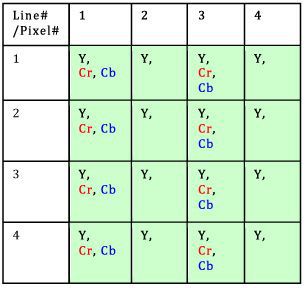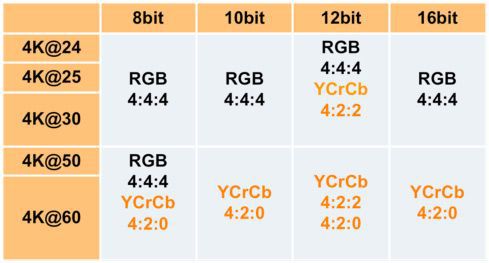-
Products
+
-
Products
- New Products
- AV over IP Solutions
- Unified Communication & Collaboration Solutions
- Digital Video Processing Solutions
- Control Systems & Software
- Matrix Switchers
- HDMI Switchers
- HDMI Distribution Amplifiers
- Wireless AV Solutions
- HDMI over CAT6 Extenders
- HDMI Fixers & Boosters
- HDMI Cables
- Active Optical HDMI Fiber Cables
- Audio Solutions
- Accessories
-
Key Digital AV Over IP Systems
- AV Over IP Systems Overview
- AV Over IP Products
- DIY AV Over IP Systems
- Control Apps and Software
-
-
Markets & Solutions
+
- KD University
-
Resources
+
-
Press Resources
- Press Releases
- Key Digital in the News
- Hires Artwork
-
Sales Resources
- Market Case Studies
- Video Resources
- Sales & Tech Presentations
-
- About Us +
- Contact
Practical use of 4K UHD resolution in ProAV applications
By Mike Tsinberg - June 2015
New native TV resolution of 3840pixels×2160lines is commonly described as 4K UHD (Ultra High Definition) format. 4K UHD has 8,294,400 pixels per frame that about four times the pixel count of Full High Definition 1080p format (1920x1080=2,073,600). It's also defined to have a minimum of 16x9 aspect ratio and can be refreshed at 24 (23.98), 30 (29.97) or 60(59.94) frames per second.
4K UHD can quickly exceed all the available data bandwidth we have available through most common connectivity formats such as HDMI or HDBaseT. Therefore we have to carefully define color and bit sampling depth.
As any other TV resolution format 4K UHD will undergo color sub-sampling in the TV studio for postproduction and transmission purposes.
Starting with 4K UHD TV studio cameras all images sampled in the so-called 4:4:4 format. Below is a 4x4 pixel grid that explains this format. Each pixel here is represented by Luminance Y pixel and two Color difference pixels: Cr (red differential) and Cb (blue differential). The matrix converting YCrCb to RGB is fully transparent. So this 4:4:4 format represents most color information available at the camera sensor.
4:4:4 Format

Traditionally in broadcast studios and postproduction facilities the 4:4:4 format is sub-sampled to so called 4:2:2 format were only half Cr/Cb samples are used in horizontal direction. Such sub-sampling is well suited for human vision because our retina has substantially less color resolution then black & white. Therefore for video material it is very hard to find any quality difference between 4:4:4 and 4:2:2 formats.
4:2:2 Format

To achieve further data rate reduction 4:2:0 is used as the transmission format of compressed TV programs. 4:2:0 takes advantage of the fact that our retina has reduces color resolution is all directions. 4:2:2 only reduces color resolution in horizontal direction. 4:2:0 reduces color resolution in both horizontal and vertical direction as it shown below:
4:2:0 Format

Again it is very hard to find any quality difference between 4:4:4 and 4:2:0 formats for regular video material.
All TV programs transmitted today via Terrestrial, Cable or Satellite or Internet streaming is encoded in 4:2:0 and 8 bit/pixel format before compression. The data saving is obvious. For example 4K UHD 4:4:4 8 bit/pix at 60F/s requires 12 Gb/s data rate. The 4K UHD 4:2:0 8 bit/pix at 60F/s requires 6 Gb/s data rate. That is reduction by factor of two for a change that is very hard to see on the TV screen.
Currently HDBaseT – now most commonly used digital connectivity format over twisted pair – support 4K UHD 4:2:0 8 bit/pix at 60F/s as per table below:

4K UHD 4:2:0 8 bit/pix at 60F/s is also part of latest HDMI 2.0 specification as per table below where Black is HDMI 1.4 spec and Orange is HDMI 2.0 spec.








